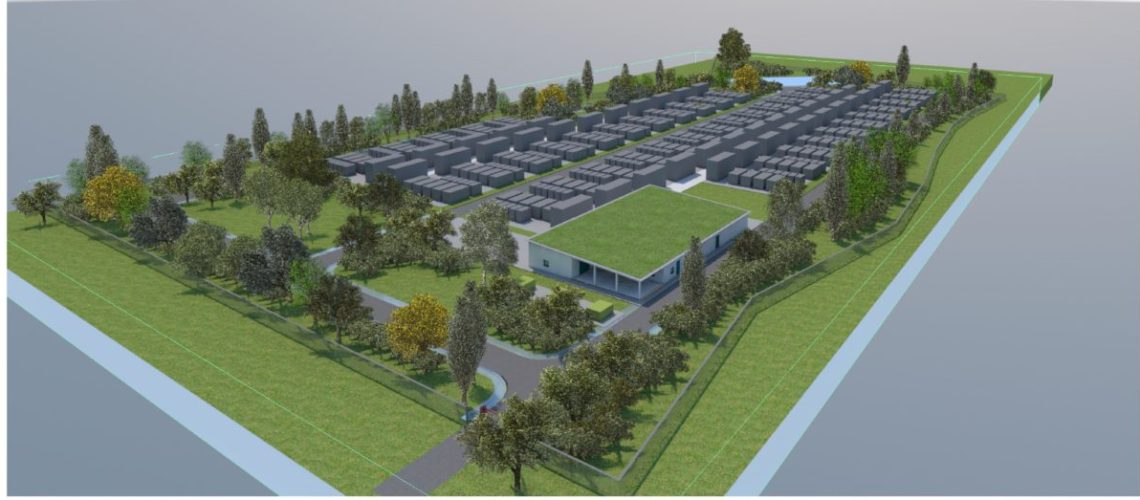With the pace of energy storage already ramping up in standalone and solar-plus-storage projects, few outside of the development community have focused on deploying storage systems on the generation and distribution side of the grid to unlock transmission and distribution capacity.
Speaking on a panel entitled, “Energy Storage as Grid Assets: Expanding Transmission Capacity to accelerate renewable growth” at Intersolar North America in Long Beach, Calif., industry panelists pointed to international storage projects that could be replicated in high penetration distributed generation regions such as California.
Under this innovative process, one battery system is installed next to a solar project and another is installed at the end of the transmission corridor, close to an urban center, for instance. This provides a large boost of grid storage capacity in the range of hundreds of megawatt hours.
Andrew Gilligan, director of commercial storage at Fluence Energy, said his company has been developing a large 250 MW Netzbooster (Grid Booster) project in Germany with partner TransnetBW that provides this exact “storage-as-transmission” system.
With high wind resources in northern Germany and a large industrial concentration in the middle and southern regions of the country, government energy authorities sought a storage-as-transmission solution “to better utilize the existing transmission and distribution system,” Gilligan said.
The 250 MW battery-based energy storage system supplied by Fluence, will be located at Kupferzell, a major grid hub in Baden-Württemberg, part of Germany’s industrial region, and is scheduled for completion in 2025. The project is designed to reduce operating costs of Germany’s transmission system. The Grid Booster project will lower the number of required preventive measures in system operation, while also increasing the use of the electricity grid, thus reducing the need for traditional alternating current (AC) network reinforcement and expansion, said Gilligan.
Jackson Salovaara, vice president of strategy at SB Energy, a solar developer backed by SoftBank, said the Grid Booster example reflects multiple application uses in the grid transmission and distribution capacity for energy storage. Historically people have associated storage with coupling just with solar at the generation point.
Gilligan, Salovaara and Gabe Murtagh, storage sector manager of the California Independent System Operator (CAISO), all agreed that energy storage placed at two interconnection points provides a great way to avoid transmission costs in markets that resemble Germany. They used California as an example, with its high remote renewable energy resources and densely populated regions within a few hundred miles.
In addition to the standalone investment tax credit from the federal Inflation Reduction Act that can be applied to energy storage projects starting this year, Murtagh said storage provides additional revenue streams than just standard power purchase agreement mechanisms, such as “rate-basing over time.” Justin Boose, a partner at Holland & Knight, said his firm has routinely seen the terms “storage as a transmission asset” and “storage as a merchant power asset,” showing the new use cases and ability to monetize distributed generation resources such as storage assets.
Nevertheless, Gilligan was first to acknowledge that outside of California, the U.S. utility market continues to lag in the global energy storage development market compared to countries like Germany, Chile and Lithuania, among other parts of Europe affected by natural gas and spiking energy prices from the Russia-Ukraine War.
“You can’t make multiple use case examples for a power transmission line,” said Boose, highlighting use cases of storage such as merchant power, energy arbitrage, and contingency events such as during California’s wildfire season.
New markets for energy storage in the U.S. include the Southeast, where the “vertically integrated utility” market and new developments of utility solar projects create good opportunities to add storage in additional places near pockets of high populations and industrial activity, said Fluence Energy’s Gilligan.
The passing of the Inflation Reduction Act in August 2022 has spurred a boost in forecasted capacity for energy storage to 55 GW, which BloombergNEF has forecast through 2026, while Wood Mackenzie analysts have forecast about 65 GW of new installed capacity in the same timeframe.
CAISO’s Gabe Murtagh said this week that California is forecast to deploy 2 GW of energy storage assets per year for the coming years, a clip on par with the historic rate of solar installed in the state, or about 1.5 GW per year. This past summer CAISO saw 6 GW of installed storage capacity feeding into its grid, of which 5.2 GW was four-hour duration lithium-ion systems, Murtagh said.
With daily peak prices increasing across the board, SB Energy’s Salovaara said, “the hour we’re worrying about is 8 p.m.,” in response to a question about the energy storage market using new resources from long-duration systems such as flow batteries, which provide 6 to 12-hours of power dispatch, after solar resources are inactive during the day.



